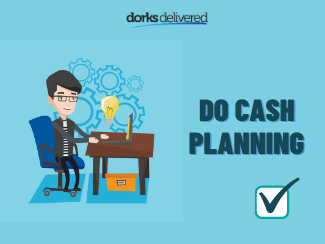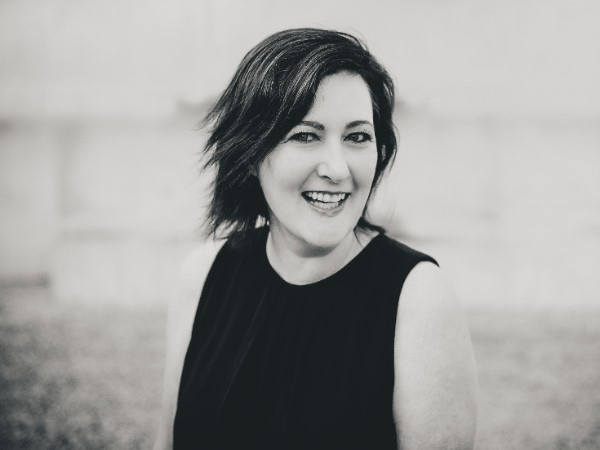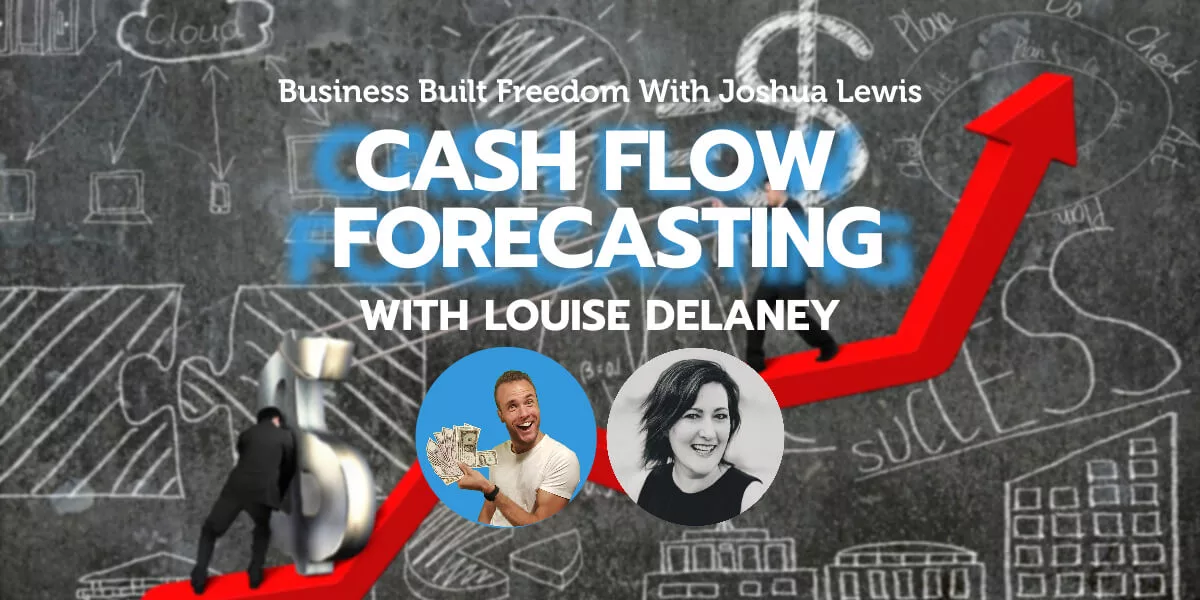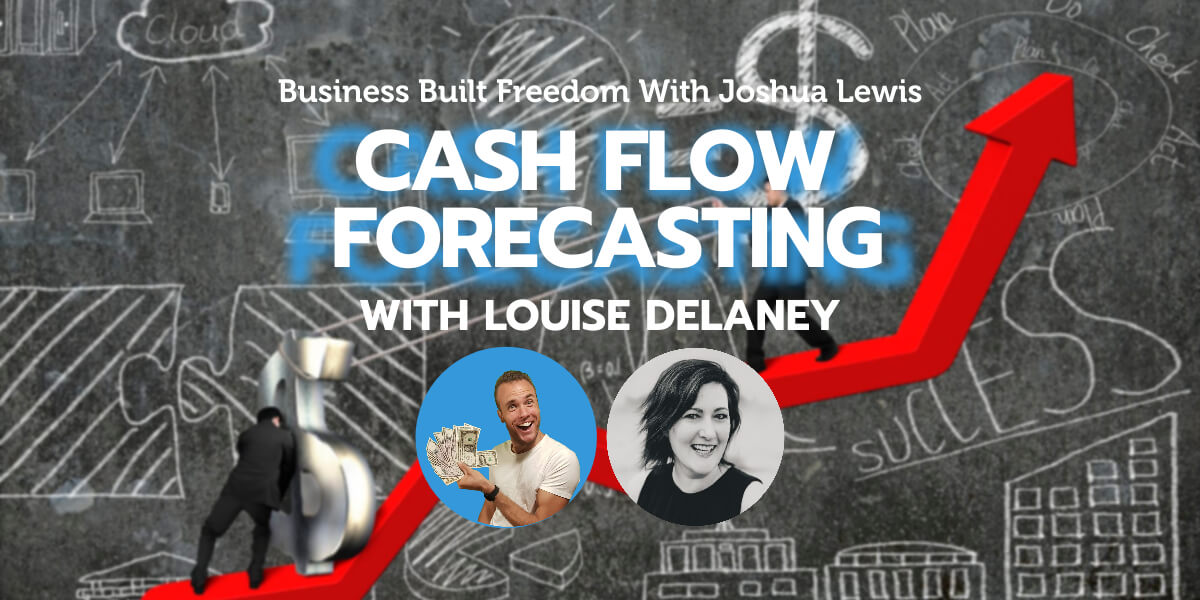There is a gap in many businesses and that’s cash flow forecasting. It’s too expensive not to have good cash flow so we asked Louise Delaney from Cash Flows For You to share tips on how to have better cash flow in business, keep good records of that, and make sure you know where you’re going.
Louise Delaney is the owner of one of the best Immigration Law firms in Australia, Timpson Immigration Lawyers. With a background in IT and Banking, she also created Cash Flows for You for business owners who need solid knowledge that their business cash position is safe so that they can focus on other high-value activities.
Turn your IT into a utility to finally have time for your family, business, hobbies and all the things you love doing. Talk to a dork!
Normalise Your Cash Flow
Why did you start Cash Flows for You?
Louise: My first business is a law firm. I’m not a lawyer, I’m a business owner. My business partner is a lawyer. And there was a massive disconnect between the work coming in and delivery and when we were going to get paid, and then the bills and how I was going to pay wages and practice subscriptions and all these things so the stress was real.
I went to bookkeepers and accountants, who are very focused on the backwards view and doing the right thing with the general ledger. I couldn’t get the forward view that I needed or the control of my cash that I needed, so I did some research and started it myself. I swear by the 13-week rolling cash flow, which was originally a Keith Cunningham design, and is now a hybrid Louise Delaney design.
You’ll see and hear different ways that people try to combat cash flow. And even in a home sense, the common advice is to have one bank account for holidays, another bank account for personal fun stuff, and then all of a sudden, you get this crazy bill and you weren’t expecting the car engine to blow up and the insurance to come through. Having good cash flow practice and good cash flow hygiene is all about understanding where that’s going and where you’re actually sitting—normalising your understanding of how much money is actually coming in and going out.
Louise: When we start a business, we measure our marketing, we measure our sales, but we never measure our cash, which is like anything. If you’ve got visibility of it, you can stop stressing about it. It’s not running around in your head, you’re not guessing. So when those unexpected bills come in, although you didn’t really plan for that, it’s okay because you know what your cash is doing and you know how to manage that.
Stop guessing how much you’ll be spending on IT support every month. Join the Dollar IT Club for simple pricing and big savings on software, hardware and helpdesk support.
When you have that data, you can then make informed decisions. When we go into businesses, I see just from an IT perspective the amount of waste that people have. They’ll be spending something because they’ve been spending something and there’ll be things with it. They could be on a phone plan for their business where they’re spending $1200 or $1500 a month. I was sure we could do a better price than that, and I looked through and $200 a month is what it got down. Always doing something the same way doesn’t mean that it’s always the right way to be doing it.
Louise: If you can see it, you can alter it. For example, if you’ve got low sales, you could look into where you can save some money and that makes you focus on those bills that you’ve always paid at the same rate and never questioned.
It gives you eyes on the numbers without thinking about it from a spreadsheet point of view. It’s more of a personal connection with how you are going to pay those bills and where you can save some money just so you can get to keep more cash.
It holds you accountable for where you’re spending your money. It also highlights if you need to increase your sales to keep paying a $400 Telstra bill or is there a better way to do it. It helps you to push towards making decisions and to get smarter with your cash.
Hold Onto Your Cash, Be Ready for a Rainy Day
In times like this, some businesses are in a holding pattern, others are nosediving. There are businesses that are skyrocketing, while some are all over the place. It doesn’t really matter what part you’re in—whether you’re going up or down, left or right. If you don’t have good cash flow, if you don’t know where your numbers are, you don’t know where your expenses are going and you can very quickly go backwards.

Louise: Before creating Cash Flows for You, my business coach and my accountant were saying, “Look at this profit, look at this profit.” I said, “Have you seen my bank account? Where is this profit?”
Once you’ve got that foundation that allows you to get to profit but it’s slipping through your fingers, you’re on that rodent wheel and you’re never going to get past it to actually make a clear profit.
You can look whether you’re going up in your business or you’re just trying to stay alive. You can make those decisions get some control over it even if it’s just a bit of money coming in.
That’s what happened with COVID. A lot of people didn’t earn as much or didn’t get as much cash coming into their business, but they also dropped all of their expenses. It’s managing what’s coming in and what’s going out while making sure you’re setting clear goals for that money that you’re going to keep in the business for the foundation. It could be for the next growth period or even for getting out of your business. To be able to present somebody with solid cash flow forecasting is a great exit strategy as well.
Learn more about Options for Exiting a Business and Business Succession Planning
When I started out in business, I had about $1,000 and I said let’s see what happens. It was a side hustle, working for Education Queensland. I put $1,000 in and pulled out $1500. I took my $1000 back and used that $500 to make $1000, and then that $1000 turned to $2000. Before I knew it, I was working with Education Queensland and bringing in $4,000 a month. It just started creeping up from there. I thought this is becoming pretty real, what would it take for me to jump?
A lot of people who want to keep the security net of their own job would wonder what would they need to jump. Some people say they just need 12 weeks to set up a million-dollar business. Don’t do that. Get to a couple of conferences and talk to some seasoned business owners first.
I had the business running as a side gig for three years. Although the business was sitting on a recurring basis bringing in money, I’d saved up enough for six months’ worth of expenses just in case all of the recurring income disappears.
IT doesn’t have to be expensive. If your business needs reliable IT support and services, fill out the form to learn more about $1 IT solutions.
Louise: That’s a strategic approach to business and managing your risk. A lot of business owners might do the number crunching to get started but then stop looking at it going forward. We may be fearful of looking at it, or we think that this is as good as it gets. It would be brilliant if every business owner could take a few weeks off, maybe go to Thailand or Bali every year, or maybe just Queensland, and do that same strategic planning again and base it around your foundations for building the business.

I had a vertical that I was working with and it was working really well. They were growing very quickly so we invested a whole bunch of money in new infrastructure and data centres in Melbourne and Brisbane. But after a month, the whole thing came tumbling down. That nearly killed us. It’s good to be prepared as best you can. My risk threshold was six months.
Interest Compounds Interest
What I learned was interest compounds interest. When you’ve got $60,000 sitting in your bank, and you’re running a positive business, every day that that still happens, you’ve still got more money coming about.
Louise: It’s also emotional interest. If you’ve got $20 or $500 in your wallet, you certainly feel a lot wealthier than if you’ve just got a card. I find when you start doing your cash planning, it is like saving in a piggy bank. Once you start seeing your cash balance going up, you get more efficient at how you use your cash because you know it’s not yours. It’s the business’s so it’s whether you want to stay in business for a long time or a short time or hit a peak. You may get a bit greedy with your cash so when you make decisions, make them without the emotion attached to it. It’s the numbers that are really blindingly obvious that are pushing you towards that decision.
We have that feeling of a dopamine release when we bought something cool with a credit card or out of your own cash. But a week later or 55 days later, after the interest-free period, you dive down. Once you become cash flow positive, there’s a stress that’s lifted off your shoulders.
Turn your IT into a utility. Save up to 50% on typical hourly IT support.
Louise: I don’t even run my law firm now with a credit card, and it took me about five years. I always had probably 10 grand on that credit card. I didn’t even need it; I used it because I was scared to use the cash in my business in case I didn’t plan for bill properly or there are extra taxes that you hadn’t planned for. So now I run the business without a credit card.
I do have a credit card in my personal life but the same principle. As soon as I use it, I do the transfer to pay it off again. It hasn’t always been that way. I’ve been burned for using a credit card, but it’s also nice when one of the benefits of cash flow planning is if you’ve got a 12-month subscription for something, you can pay it monthly or weekly or bi-annually. It’s better for cash flow to do that. But psychologically, it’s amazing when you know you’ve got enough cash just to pay for that but it’s better when you get a 10% or 15% discount.
I have another client that is very difficult to do cash flow forecasting for because everything goes on the credit card, but she did it because of the rewards points. I said that needs to be revisited. Just change the payment cycle.
Know Your Goals

Whatever it is—whether it’s $200 or another 2-million business—get clear on your goal and then reverse engineer how you’re going to get to that goal. The way toward your goals could be more sales and less expenses or doubling everything you’re doing to get there quicker.
Your goal may be to reduce your risk. If the industry that you’re in changed and you got wiped out or the industry got wiped out, your goal might be to keep going for six months until you can change the direction of your business or get another job or whatever it might be. That’s probably the best way to get started with cash flow management.
Write it down on a bit of paper or on a spreadsheet. Just get started. You’ll get excited about the results. If they’re not exciting results, at least you know about them and you can do something.
If you aim at nothing, you’ll hit it everytime.
If you’re looking to hear a bit more information about how you can better your cash flow, jump over to Cash Flows for You. Book a discovery call. Louise will be more than happy to help you make sure that the results make sense and that you do have achievable results with micro-milestones.
Book a Discovery Call With Louise
Recommended Books: The Barefoot Investor and Profit First
What is the book that would that influenced you or that should influence them?
Louise: I am going to overextend that and say The Barefoot Investor, Profit First from Mike Michalowicz, who has just written Fix This Next, which I’m just reading at the moment. They’re the foundation for getting your head around cash flow management when you don’t have an accounting degree or you’re not a bookkeeper.
If you enjoyed this episode, make sure to jump across to iTunes, leave us a review, and give us some love. Stay healthy and stay good.
[module-379]






























